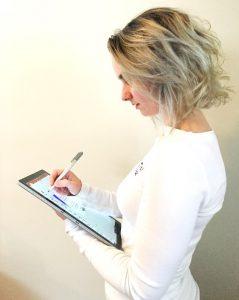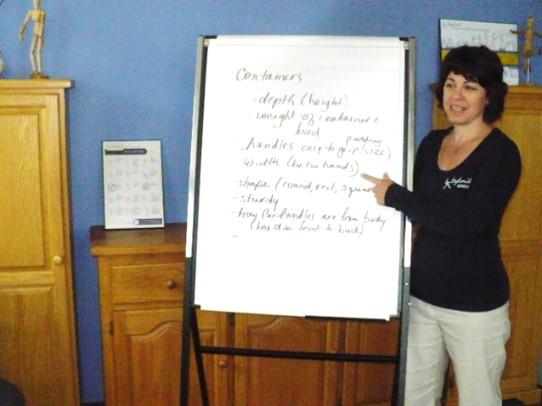By Josie Blake
I’m taking a course on adult learning, following in the path of other Taylor’d ergonomists. Our company has developed and offer many courses directed at professionals in the safety, engineering and human resources fields looking to update their ergo education, or get some continuous education credits. As I work my way through this course, I’ve noticed similarities between developing a course, and completing assessments and finding and implementing solutions. In other words, the skills involved in practicing ergonomics and teaching ergonomics are very transferrable!
I first started thinking about this when we were taught to do a “task analysis” in order to help define learning objectives. By doing the task analysis, you can see the steps that are required to complete the “task”. For example, if you were trying to teach learners how to complete an office ergonomics assessment, you would need to complete the task analysis to identify the steps of the assessment. The task analysis helps you to break the course into sections, and identify the learning objectives for each section of the course. An office ergonomics assessment task analysis might look like this:
- Collect and review background information
- Interview the worker
- Observe the worker
- Make changes to the workstation (perhaps with sub-steps)
- Make recommendations for long-term changes
- Write the report
- Follow-up with the worker
If you are teaching someone how to complete an office ergo assessment, you need to have the “essential duties” clearly identified, and in sequence, before you can write learning objectives for each step. Doing a task analysis for the purpose of course development is actually quite similar to the first step of completing a physical demands analysis or ergo assessment (stuff that we do every day!).
Course development and adult learning theory teaches us to be mindful of the learning cycle. David Kolb, a developmental psychologist, looks at learning as a 4-stage cycle:
1. Concrete experiences
2. Observations and reflections
3. Form abstract concepts and generalisations
4. Test concepts in new situations… and repeat.
(Click here to find out more: https://www.simplypsychology.org/learning-kolb.html)
We must allow learners to move through the entire cycle before we are confident that they have “learned” something. For example, in the office ergo course, in order to teach step 4, we demonstrate the adjustments to make, allow participants to try (concrete experiences), encourage them to discuss what they saw (observe and reflect), ask them what other scenarios they might see this in (abstract concepts and generalisations), and then allow them to test their scenarios. This seems like a lot of effort for one step! But it’s much more effective than a slide presentation alone.
In my everyday job, doing ergonomics a ssessments, I continuously move through the learning cycle. When I go out to observe a new job, I am gaining concrete experiences by watching experienced employees, I reflect on the job by summarising the job demands and writing the report, I develop abstract concepts and form generalisations (compare to other jobs we’ve seen, think about what solutions worked in other scenarios that might work here), and I test these scenarios at the job I am currently studying. Thus, I move through the learning cycle for almost every job that I assess!
ssessments, I continuously move through the learning cycle. When I go out to observe a new job, I am gaining concrete experiences by watching experienced employees, I reflect on the job by summarising the job demands and writing the report, I develop abstract concepts and form generalisations (compare to other jobs we’ve seen, think about what solutions worked in other scenarios that might work here), and I test these scenarios at the job I am currently studying. Thus, I move through the learning cycle for almost every job that I assess!
I can relate to my everyday experiences practicing ergonomics to many aspects of training development. (A fortunate benefit for me… adults are only motivated to learn if they can relate to and use the content in their personal goals). I’m applying what I’ve learned to the new public works employee workshops that we are developing now. (And Carrie says I have some work to do on our office ergo course, before February. Stay tuned!)


